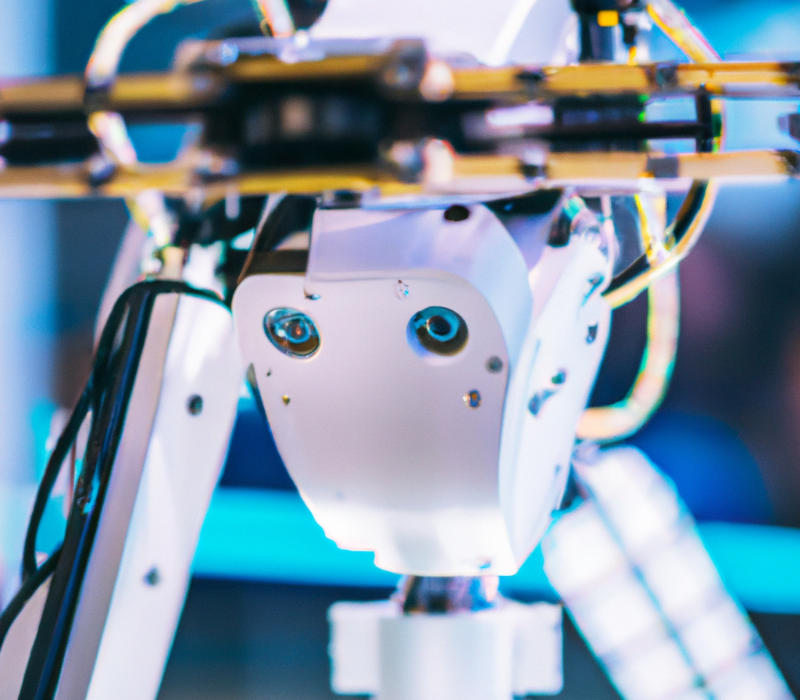Energy efficient operation of pneumatic systems

As energy prices rise, most people, like industry, are trying to rationalise their energy use. While in our homes we can simply choose to be more careful not to light up rooms where we are not present, industrial players can reduce their energy use by other means. In this article, we look at the energy-efficient operation of pneumatic systems.
Pneumatic systems are based on air, but to use air as energy, three energy conversion processes are required, so it is worth monitoring these processes. Firstly, the system involves a motor that uses electrical energy and then converts the electrical energy into mechanical motion - driving the compressor. This is important to know because using a better quality, more efficient, less energy consuming compressor can result in less electricity being used to generate the mechanical energy. Our compressor uses electricity to create compressed air using mechanical energy, which can be stored in a tank until needed. The longer the duration of storage, the greater the amount of energy produced but not used, so it is also important to improve the logistics of the system. If we can use the energy without storage or with short storage, we can also reduce the amount of energy produced. Once the energy has been produced and stored, the receiving units convert this compressed air back into some form of mechanical movement, thus using it in the production process. In order to make this process as energy efficient as possible, we must of course reduce the amount of air used and optimise the energy consumption of the receiving equipment to a value close to the minimum required for its operation. Doing this without changing the production efficiency is a difficult but rewarding task in the long term - because, in addition to energy efficiency, it also has a beneficial effect on the lifetime of the equipment.
The next thing you can do is to shorten unnecessarily long pipes, or perhaps rearrange the plant so that the individual elements are closer together, reducing the distance over which air has to be transported - reducing the potential for leaks and energy wastage. Similarly with storage, the more time before use, the more energy is wasted. When designing a pneumatic system, attention should also be paid to the layout of the receiving equipment. It is important that the equipment is close together, so that not only is the distance shorter, but in this way, the air path is close the same in all directions for as long as possible. This results in all air flowing through one branch, one pipe. This also minimises the number of leakage errors, thus reduces the amount of compressed air what is not used but is produced, and the amount spent on buying and replacing pipes is also significantly reduced.
Proper and continuous servicing of the receiving equipment is important for energy efficient operation. The maintenance of the receiving equipment prevents corrosion and premature wear and tear, and the cost of this is in most cases dwarfed by the cost of buying a new piece of equipment. Proper maintenance can also significantly reduce the amount of energy required to keep long-standing equipment working properly, because if a piece of equipment has been in service for a long time, it can easily become more energy intensive to supply it due to corrosion, wear and tear and leaks, which not only affects the energy used, but the whole system - as we already know; if the air pressure is higher, the chances of failure are higher. We've already summarised what you need to know to look after your system properly in our pneumatic system maintenance article - so we won't go into this in any more depth.
However, the use of single-acting cylinders and actuators offers further energy-saving potential, as double-acting actuators achieve the initial state of the device by applying a reverse thrust to the device after the energy has been used, thus pushing the mechanical element back to its initial state. By repeating these two steps, a multi-acting working cylinder can perform useful work. Single-acting devices, on the other hand, use a spring to return the cylinder to its original state without using another dose of air, so that the operation of the device uses less energy. It is important to note that the energy consumption will not be half as much, as the spring will cause the extension process to require more energy because the spring will have a minimal counter-resistance too.
So, in summary, if you want to design and operate an energy efficient pneumatic system, the layout of the system, the length of the pipes, the maintenance and the operating principle of your equipment are the most important aspects to consider. By taking these into account and optimising them all to the best of our ability, we can be sure that our pneumatic system will operate in the most cost-effective way possible.
